Longer wavelengths in sunlight have a systemic impact which improves vision
-
The lead author of this study is Glen Jeffery of
Institute of Ophthalmology, University College London. He stays in his lane and his articles are about light and vision.Abstract
Long wavelength red light that can extend beyond the human visual range penetrates deeply through biological tissue. Exposure to these longer wavelengths improves mitochondrial function and ATP production. This can translate to improved physiological performance, particularly in the CNS, including the visual system. Light driven metabolic improvements to regional exposure can impact systemically. Here we show that infrared wavelengths from sunlight can be measured after they pass through the human thorax. We then select a prominent transmitted solar wavelength range (830–860 nm) and deliver this to the thorax of subjects in the lab in controlled 15 min exposures with and without ocular involvement. Clothing reduced wavelength intensity but was not a barrier. These exposures were associated with significantly improved visual function when measured 24 h later even in subjects in which light was blocked from the eyes. Our data show that longer wavelengths of sunlight penetrate through the human body and, consistent with animal studies, have the ability to improve function. While infrared light has been used on targeted tissues, its ability to improve distal tissues in humans has not been explored. This study also highlights the potentially important therapeutic value of sunlight whose longer wavelengths can reach key organs even through clothing and likely promote mitochondrial function counteracting the decline with age and disease.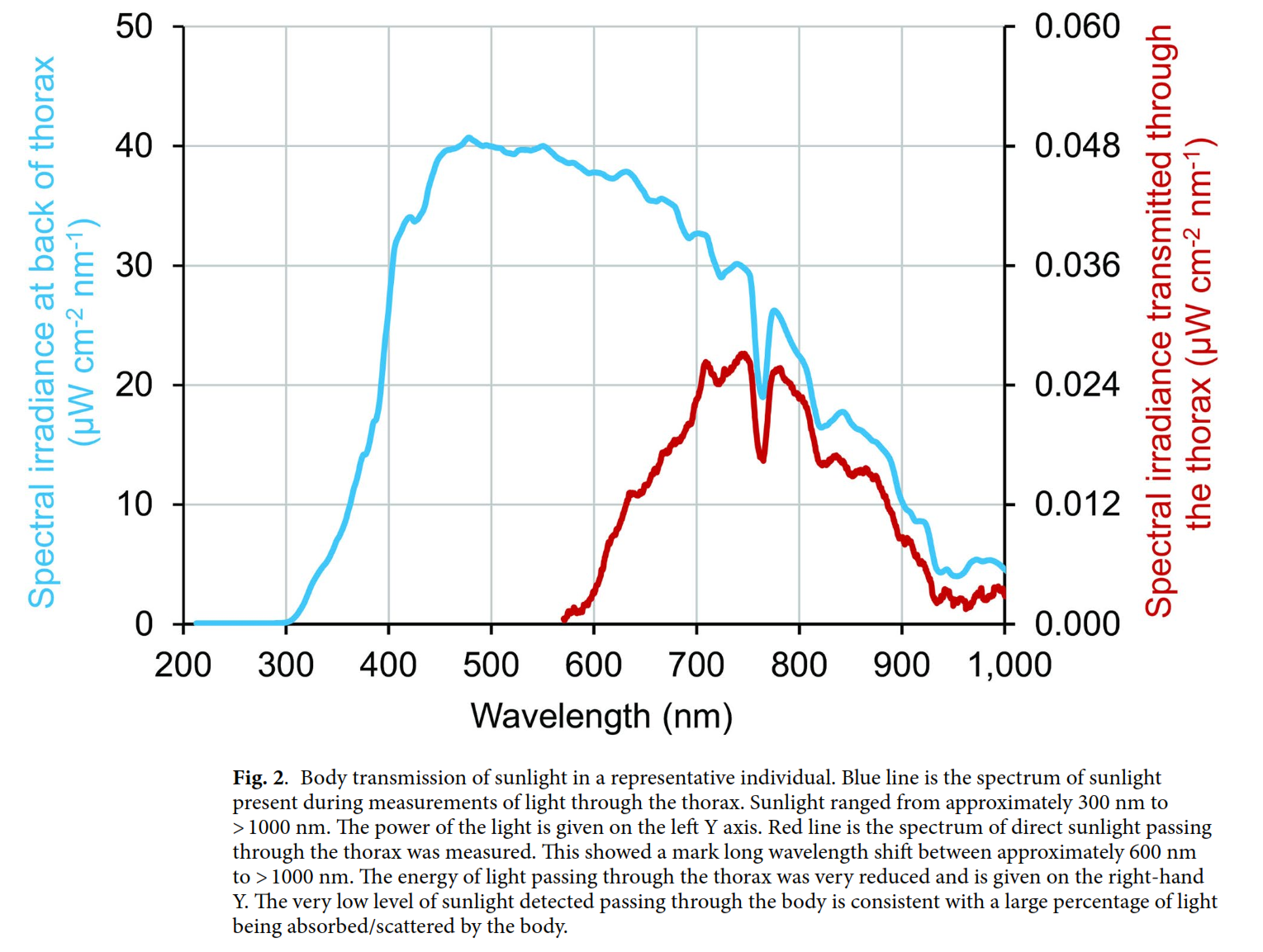
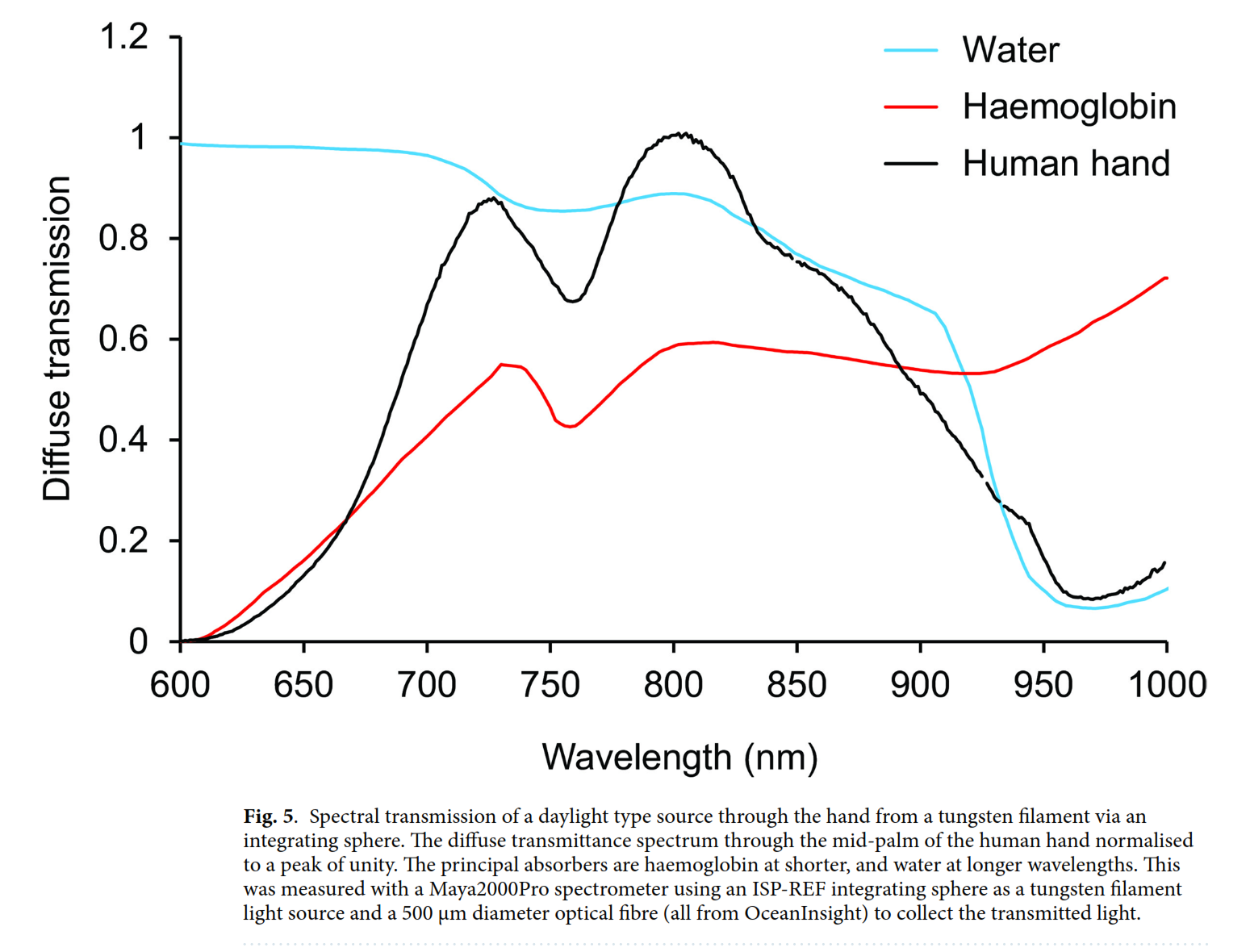
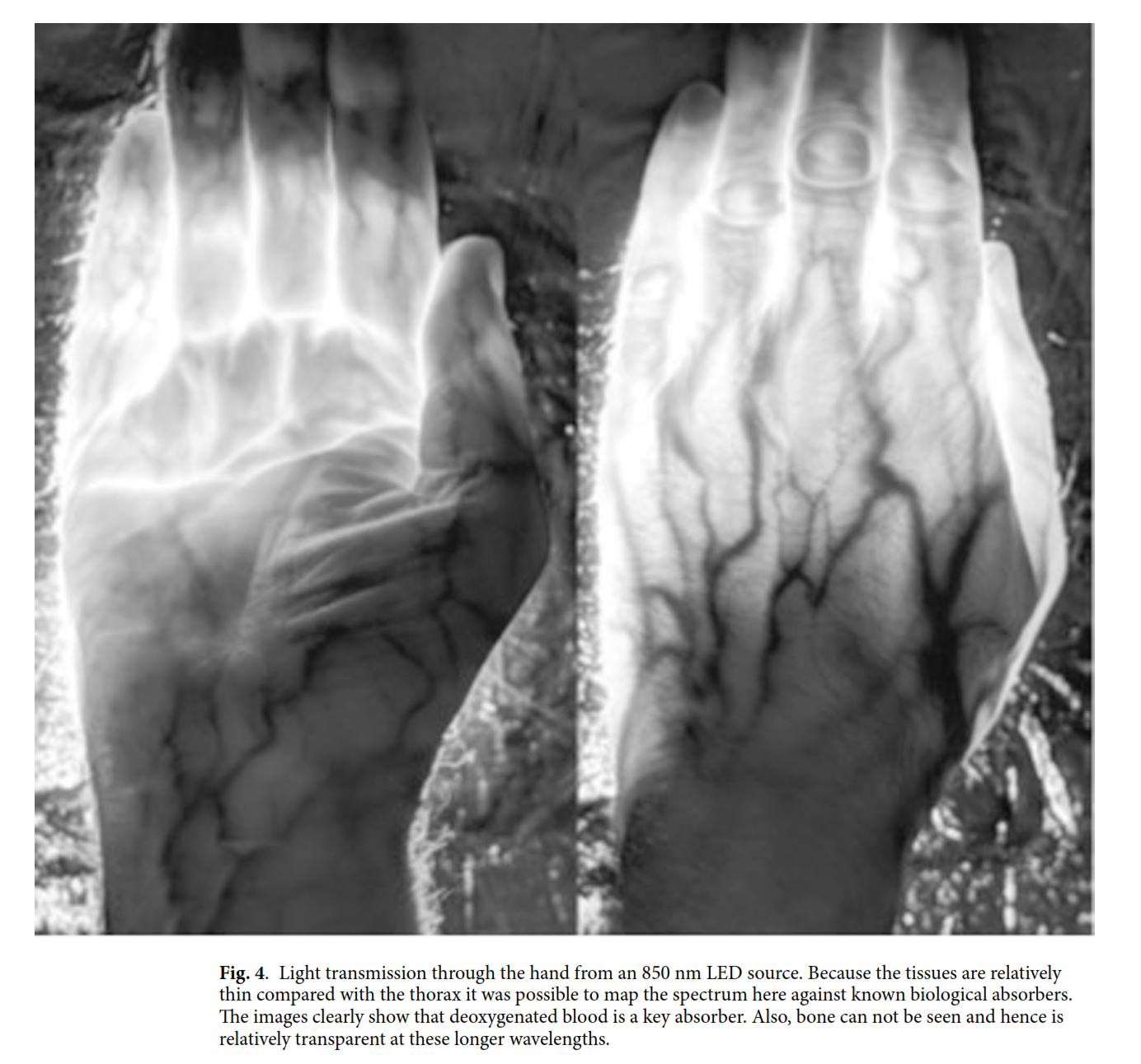
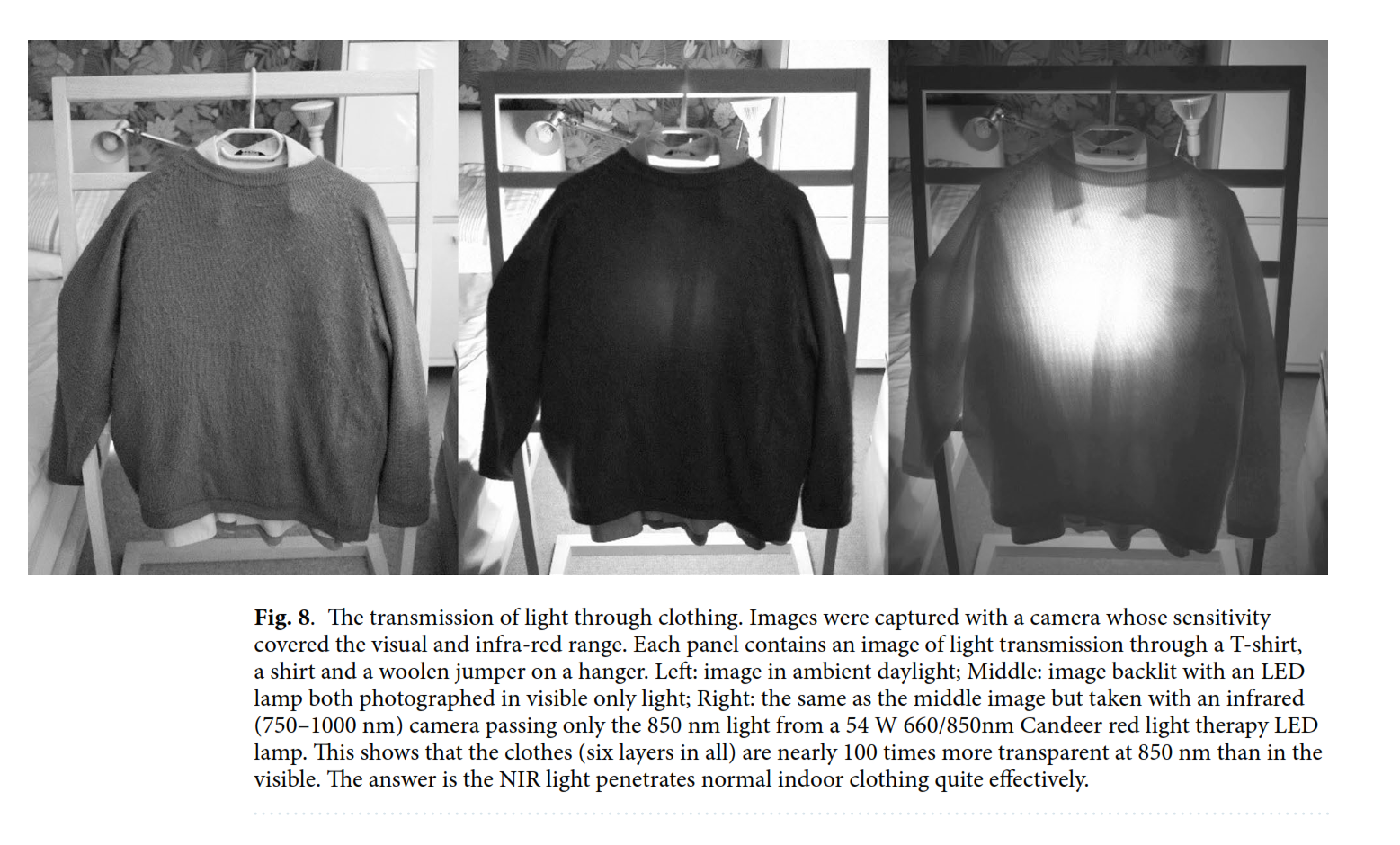
-
super cool
-
Interesting study. I'm attempting to find things to help with my elderly father's vision.
I find this paragraph from the study to be helpful in noting the specific light, dose, and application. I'll have to reread to confirm all is there, but at first glance it seems to be.
Also worth noting, from a red light thread, is whether LEDs should be used. They clearly use an LED light in this study.
"LED 850 nm light
Light penetrance was also measured through the thorax from an 850 nm light source in the form of a standard 60 cm X 60 cm ceiling panel containing an array of 3024 850 nm LEDs equally spaced across it giving an energy of 9.18mW/cm2 at 50 cm, which was the distance at which subjects were exposed and measurements of transmission made. This was manufactured to our specifications by Light, Power Health UK. 850 nm LEDs had a half power band width of 830 nm and 865 nm in a slightly positively skewed asymmetric distribution. This LED was chosen because its range approximated that of a prominent spectral range of sun light measured passing through the thorax. Measurements of LED light transmission were made in a dark laboratory. In a separate group of subjects, (N = 8. Mean age 46 ± 15) the transmission of light through the thorax from the 850 nm panel was measured in a manner similar to the daylight experiments in a darkened room. The 850 nm light could not be seen with the eye unless the subject was close to it and could not be seen at the distance used for exposure in the room. A further group 13 subjects (8 male, 5 female. Mean age 48 ± 20) were also exposed to the panel with the purpose of assessing this exposure on visual function (850 nm group). These data were compared against a further 5 subjects (Male. Mean age 36 ± 9) who had their head wrapped in aluminium foil to differentiate between eye mediated, and body surface mediated effects (850 nm body only group). Additionally, 7 control subjects (Female. Mean age 35 ±
 were placed in the same position in the room but the 850 nm panels was not turned on, as a sham exposure (Control group). A trial for each subject, consisted of a first visit during which baseline colour contrasts thresholds were measured. Immediately following this, participants were exposed to the 850 nm light or a sham exposure (control) for 15 min at 9 mW/cm2. Exposure was to their back with no clothing on their upper body, in a dark room. 24 h later the participants returned, and their colour contrast thresholds were measured a second time."
were placed in the same position in the room but the 850 nm panels was not turned on, as a sham exposure (Control group). A trial for each subject, consisted of a first visit during which baseline colour contrasts thresholds were measured. Immediately following this, participants were exposed to the 850 nm light or a sham exposure (control) for 15 min at 9 mW/cm2. Exposure was to their back with no clothing on their upper body, in a dark room. 24 h later the participants returned, and their colour contrast thresholds were measured a second time." -
@Mossy - it is great that you are looking after the interests of your elderly father. I am not certain of your defination of elderly. If it is only by age, I might qualify.
This study compared 2 different artifical lighting situations. One contained 820 nm and the other did not. I liked the study but I am waiting for a study that compares sunlight (which inherently has 820nm) and one that does not. Until then, I think natural sunlight remains the better option.
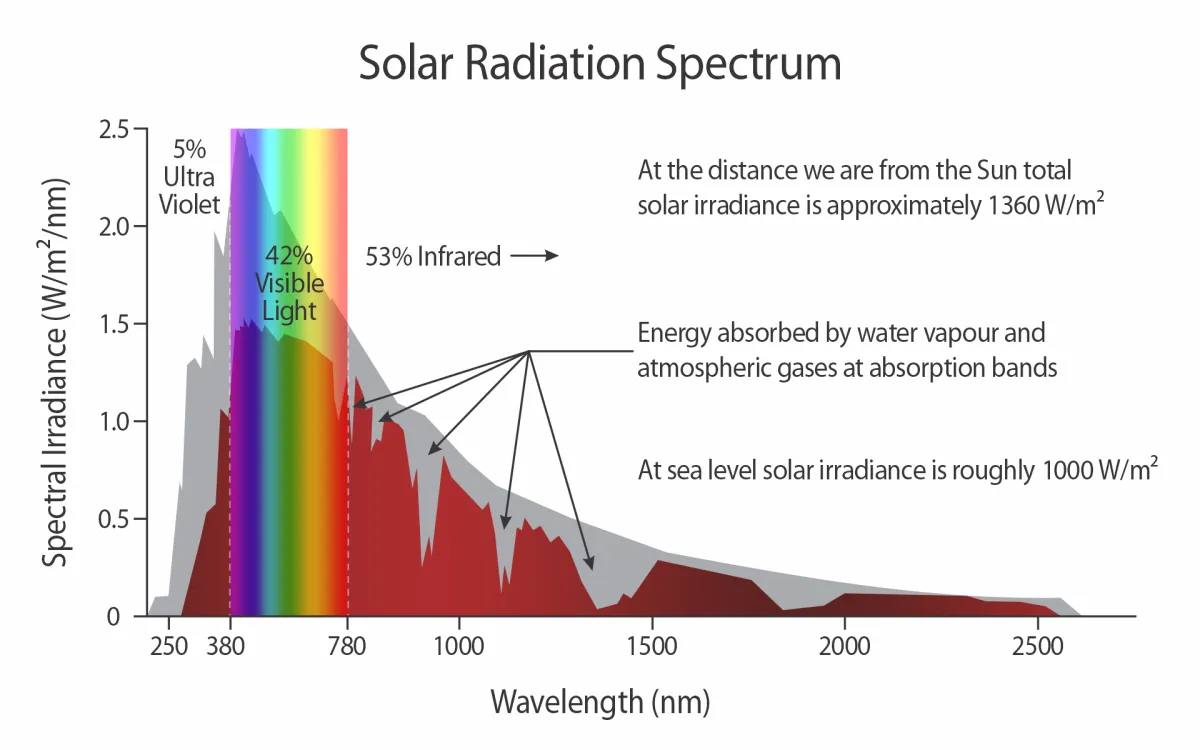
-
One thing we can do is to not use sunglasses at all as it would filter off sunlight, but I suppose if you were to wear one it would just block off blue light and still allow red light in. And while late afternoon hours have less beneficial UVB rays for vitamin D production, exposing our eyes to the red light spectrum-rich late afternoon sky would do our eyesight a lot of good. Since red light penetrates through our eyelids, we can just close our eyes as we soak in the sunlight as the reddish dusk shines softly on us.
It also helps our eyesight to have good metabolism as well as to be sufficient in retinol intake. As I have regained by long lost farsighted abilities, lost long ago in high school, by improving my metabolism as well as following Ray's advice of eating a serving of retinol-rich liver once a week. But I wasn't expecting my eyes to improve, but it slowly improved and before I realized it, my eye test at the motor agency gave me a passing grade with my driving vision and didn't anymore require me to wear glasses for driving. I reckon it took me 5 years of eating beef liver once a week, with the help of good metabolism, to get my myopic vision fixed.
I'm glad I didn't have to do eye exercises, as I don't have the kind of persistence to do eye exercises regularly and long enough to get my eyesight improved. Just glad that good nutritional habits worked just as well for me.
-
@DavidPS
Thank you very much. I appreciate the additional information. Interesting to know that 820nm is that range inherent to sunlight; so, very accessible.BTW, defined elderly due to age: a natural decline of ability, function, and quality of life, versus premature aging or disability due to accident.
-
@yerrag said in Longer wavelengths in sunlight have a systemic impact which improves vision:
Since red light penetrates through our eyelids, we can just close our eyes as we soak in the sunlight as the reddish dusk shines softly on us.
Definitely preferable to harsher sun (at least for me). And the liver is a good idea as well.
-
@yerrag said in Longer wavelengths in sunlight have a systemic impact which improves vision:
One thing we can do is to not use sunglasses at all
The term 'Sunglasses" is a misnomer. Lenses are now made from plastic. They are lighter in weight than glass lenses and they tend to leave less of an indentation on the bridge of the nose after wearing the frames for hours at a time. The term should be sunplastics,

The glass lenses blocked part of the UV in sunlight so the eye would get very little of the light responsible for the production of vitamin D, The plastic lenses do not and people are given an opportunity to purchase a blue light blocking coating when they get new glasses with clear lenses. The coatings are not 100% effective. Shades are often labeled as blocking UVA and UVB.